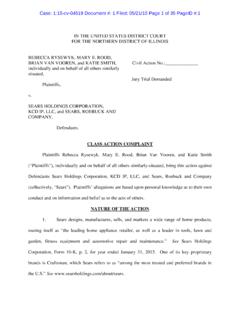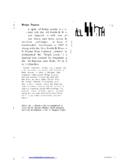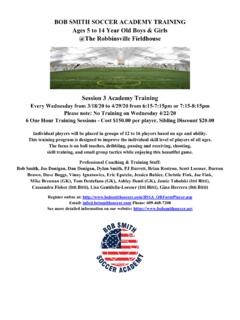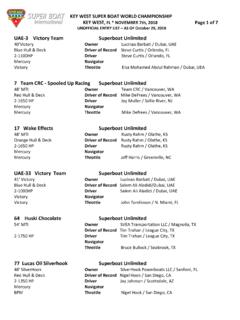Transcription of FTIR Analysis of Controlled Substances - spectros1.com
1 Spectros Associates Proudly Presents the Three Day Short Course ftir Analysis of Controlled Substances Instructor: Dr. Brian C. smith A comprehensive 3-day look at how to use an ftir to obtain spectra of Controlled Substances , and how to interpret the spectra of these Substances . Day 1 I. The Basics of ftir A. Introduction to Infrared Spectroscopy 1. The Properties of Light 2. What is an Infrared Spectrum? 3. Infrared Spectroscopy: Good and Bad Points B. The Advantages of FT-IR 1. Signal-to-Noise Ratio (SNR) 2. The Throughput Advantage 3. The Multiplex Advantage C. The Disadvantage of ftir : Water and CO2 Peaks II. How an FT-IR Works A. Interferometers & Interferograms B. How a Spectrum is Produced 1. The Fourier Transform 2.
2 Background & Single Beam Spectra C. Optimizing Resolution & Minimizing Noise D. ftir Hardware 1. Infrared Sources 2. Beamsplitters 3. Detectors 4. The He-Ne Laser E. Measuring Spectral & Instrument Quality III. Deconstructing Mixtures A. Spectral Subtraction 1. Theory 2. Optimizing Subtraction Results 3. Spotting Artifacts B. Library Searching 1. Background & Theory 2. The Search Process 3. Properly Interpreting Search Results 4. Subtract & Search Again IV. Sample Preparation: Transmission Techniques A.
3 Overview B. KBr Pellets 1. Sample Prep. 2. Pellet Problems V. Transmission Analysis of Liquids and Gases A. Capillary Thin Films B. Sealed Liquid Cells C. Gas Cells Day 2 I. Attenuated Total Reflectance (ATR): A Technique for Many Samples A. Accessory Design B. Variables Affecting Spectral Appearance C. Applications 1. Polymers 2. Semi-Solids: Gels, Waxes, Pastes etc. 3. Liquids 4. Powders D. Advantages and Disadvantages II. The Fundamentals of Infrared Interpretation A. Molecular Vibrations B. The Meaning of Peak Positions, Heights, and Widths C. A Systematic Approach to Spectral Interpretation 1. Dealing with Mixtures 2. Performing Identities Properly 3.
4 A Systematic 10-Step Approach to Infrared Interpretation III. Functional Group Analysis of Hydrocarbons A. Alkanes: C-H Stretching and Bending Vibrations 1. Straight Chain Alkanes 2. Estimating Hydrocarbon Chain Length 3. Branched Alkanes B. Alkenes: 1. Substitution Patterns 2. Distinguishing Isomers C. Aromatic Hydrocarbons 1. Mono-Substituted Benzene Rings 2. Distinguishing Ortho, Meta, and Para Isomers IV. Molecules with C-O Bonds A. Alcohols & Phenols 1. Differentiating Primary, Secondary, and Tertiary Alcohols 2. Phenols 3. Distinguishing Alcohols from Water B.
5 Ethers 1. Saturated & Branched Ethers 2. Aromatic Ethers 3. The Methoxy Group V. A Theoretical Interlude A. How Molecules Absorb IR Light B. Types of IR Bands 1. Fundamentals 2. Overtone and Combination Bands C. Fermi Resonance Day 3 I. The Carbonyl (C=O) Functional Group A. Ketones B. Carboxylic Acids C. Carboxylates D. Esters: The Rule of 3 II. Organic Nitrogen Compounds A. Amides B. The IR Spectra of Amines 1. Primary Amines 2. Secondary Amines 3.
6 Tertiary Amines 4. Methyl Groups Bonded to Nitrogen C. Amine Salts 1. Structures 2. Spectra 3. Distinguishing Primary, Secondary, and Tertiary Amine Salts III. The Infrared Spectra of Controlled Substances A. Distinguishing Cocaine from Cocaine Base B. Stimulants (Phenylalkylamines) 1. Methamphetamine 2. MDA, MDMA, and MDEA 3. Ketamine & Mescaline C. Depressants (Benzodiazepines) 1. Clonazepam 2. Diazepam 3. Alprazolam D. Analgesics (Morphine Derivatives) 1.
7 Morphine 2. Heroin 3. Hydromorphone 4. Hydrocodone & Oxycodone E. Hallucinogens 1. Psilocin and Bufotenine 2. LSD 3. Angel Dust (PCP) 4. Propoxyphene (Darvon) 5. Methadone F. Tetrahydrocannabinol (THC) G. GHB IV. IR Spectra of Compounds Used to Cut Controlled Substances A. Sugars and Carbohydrates B. Inorganics 1. Sulfates 2. Carbonates 1/05









